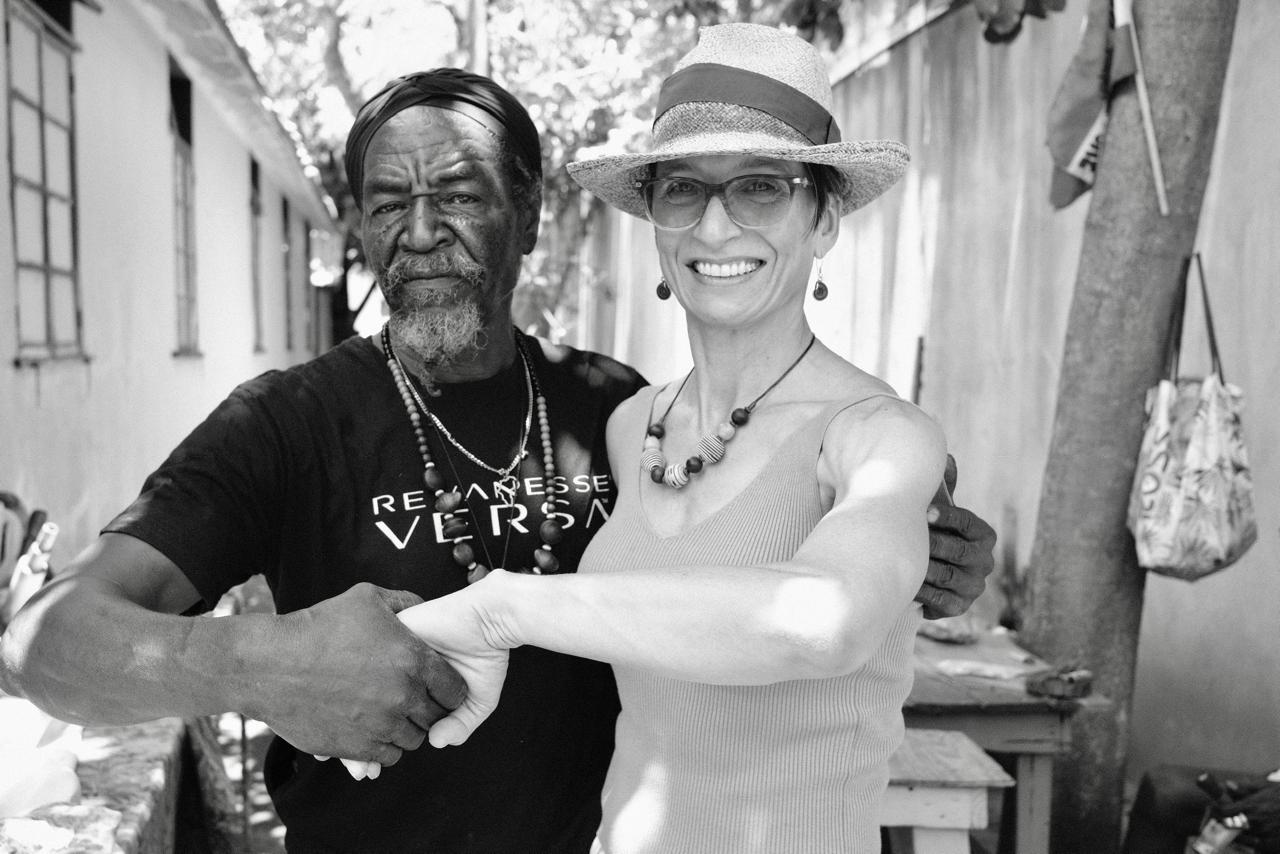Visiting the cultural centre in Trench Town was the best decision we made during our trip to Jamaica. Not only did we learn, in a more genuine way, how Bob Marley got his start in music, but we also discovered Stoneman.
Stoneman was next to the main building, in an outdoor area, beside Pete, who was smoking a huge joint submerged in a cloud of absence. Paintbrush in hand, Stoneman was writing the lyrics to Marley’s song War on a poster for a school in the community. The pallet was that of Rastafarianism: red, green, black, and yellow. It was a work done with love to keep children away from violence. Good over evil. That’s how our connection began.
He then proceeded to shake hands with us all. An extended one, like those of the eighties, in which the hooked thumbs made the palm of the hand dance in different directions. When he took my hand, and I felt his rough skin and his strong hands, I felt hugged. Overwhelmed with emotion. As he went, he recited, “I love, love, one love. The way we walk is right, forward.”
Stone and tree, in one
After that extraordinary handshake, we entered fully into the topic of shared interest: stones. On several tables, there were stones of all colours, shapes and textures. Several fit in the palm of the hand and others were large and could be lifted with only both hands. In my geologist head, I tried to think about the associations that had led Stoneman to have such a unique collection. What had he read in them?
He observed them with great care: their fissures, their changes in coloration, both on one side and on the other. He felt their texture. One was exactly the shape of a human footprint, and another looked like a piece of petrified wood. When I held it, I had no doubts: it had the characteristic fabric of wood, but it was much, much heavier.
Stoneman asked me to read aloud the meaning of petrified wood as it appeared in Google: “Petrified (or fossilized) wood is formed when a piece of wood is buried in a moist sediment, with a lot of dissolved silica. The lack of oxygen prevents the wood from breaking down and allows silica to replace cellulose and fill empty spaces. The wood does not change its structure, only the substance that composes it, which is heavier.” Stoneman then took the floor and said, “This stone is a tree. It is written on it. It can be stone and a tree at the same time.”
A river that is the sea
After our visit to Trench Town, we went to Bob Marley Beach. On the beach there were many rounded stones, such as those that are found at the mouths or banks of mighty rivers. However, there was no river nearby. We walked to one end of the beach and discovered, at ground level, a rock formation that contained the same stones. The waves had eroded this rock formation and released the stones from the river. A river that no longer exists but was written on the beach.
I told my family the story of the river that today is the sea, like the wood that today is a rock. Everything changes. Evolves. Recirculates. But that balance is fragile. My rasta friend was very clear: reading stones is telling a story that brings us closer to nature. A history that includes and, in some way, surpasses scientific explanations.
Stones, or rocks (as we geologists call them), tell us stories about the Earth’s past. They also tell us stories about what could happen again. We know, for example, that in the Cordillera de Talamanca, which have the highest peaks in Costa Rica, there are rocks that contain shells of molluscs that only live in the sea. The only way those rocks could get there is because of plate collision, which continues to happen from time to time, whether we like it or not.
We also know that the town of Palmares, was once a lake. On some rocks in the area, tusks and bones of mammoths that roamed around have been found. Mammoths that were left in the stone. Those of flesh and blood became extinct because of climate change, habitat loss and human hunting. Factors that we continue to promote, even though the rocks are shouting that we should not do it.
The time to say goodbye arrives. I try to absorb everything that Stoneman has taught us. We give each other another extended handshake and take a photo. Pete gives his joint another puff. Like the stones that surround him, he has not stopped traveling.

